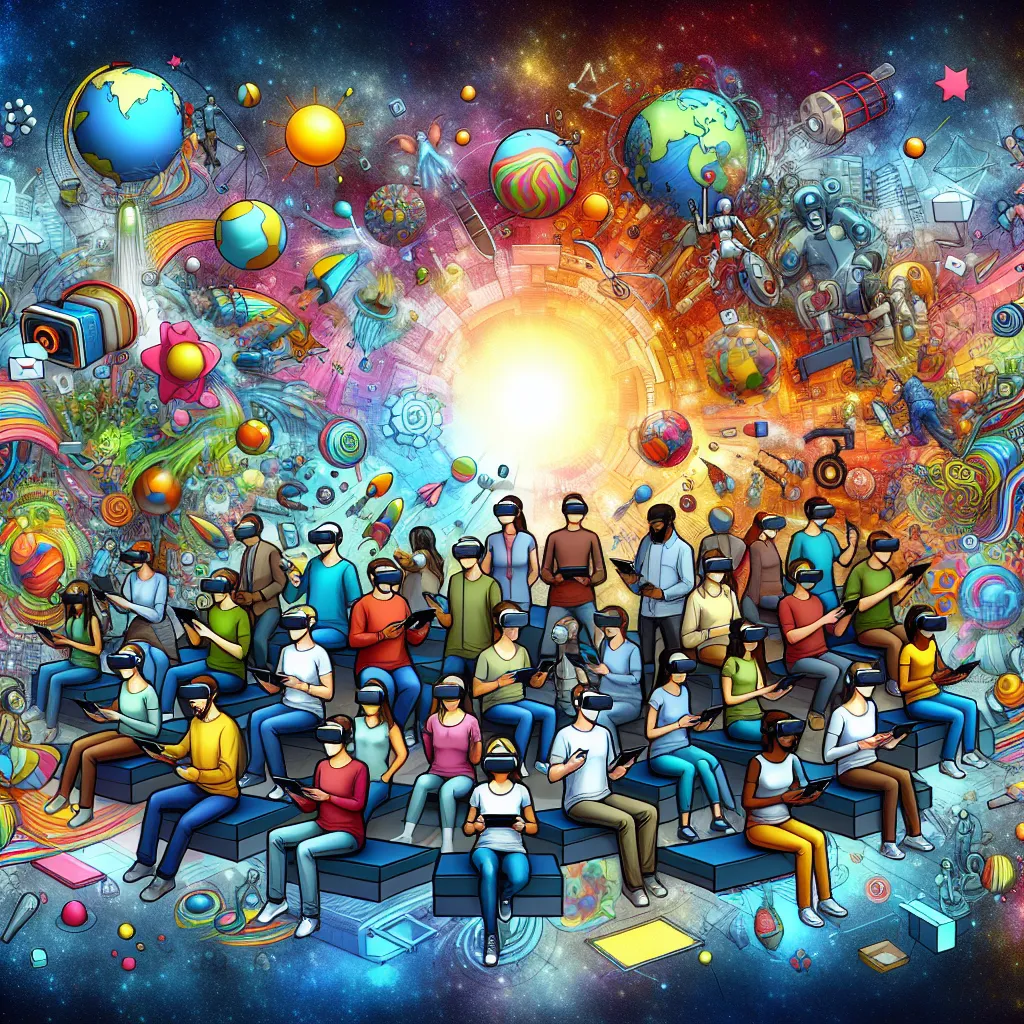Navigating Virtual Realities: Exploring the Virtual Experience Landscape
Navigating Virtual Realities: Exploring the Virtual Experience Landscape
In today’s digital age, the landscape of virtual experiences is rapidly evolving, presenting users with an array of options to explore. From virtual reality (VR) gaming to immersive educational experiences, the virtual realm offers a diverse and captivating landscape for users to navigate.
One of the key aspects of navigating virtual realities is understanding the diverse range of experiences available. VR technology has advanced to the point where users can explore simulated environments that replicate real-world scenarios, historical settings, or entirely fictional realms. This diversity allows users to choose experiences that align with their interests and preferences, whether it’s traveling through space, exploring ancient civilizations, or engaging in competitive gaming.
Furthermore, the rise of online virtual experiences has created opportunities for social interaction within virtual environments. Users can now connect with others, attend virtual events, and collaborate in shared virtual spaces. This social aspect adds a new dimension to navigating virtual realities, as users can now engage in collective experiences and create meaningful connections in virtual environments.
As the virtual experience landscape continues to expand, so do the opportunities for businesses and content creators. Companies are harnessing the potential of virtual reality to offer virtual tours, interactive product experiences, and branded content within virtual environments. This trend has opened up new avenues for marketing and consumer engagement, transforming the way businesses connect with their audience.
Navigating virtual realities encompasses a wide range of experiences and opportunities, from entertainment and social interaction to business and education. As technology continues to advance, the virtual experience landscape will undoubtedly expand, offering even more diverse and immersive experiences for users to explore.
Overall, navigating virtual realities and exploring the virtual experience landscape presents an exciting and ever-evolving journey for users, businesses, and content creators alike. With the growing interest and investment in virtual reality technology, the potential for innovative and captivating virtual experiences is limitless.
The Impact of Online Experiences on User Navigation
As the virtual world continues to expand and evolve, the rise of online experiences has significantly impacted user navigation. Navigating virtual realities, once a simple concept, has now become a complex and multi-layered process. The way users interact with online experiences has transformed the way they navigate through digital environments.
One of the key impacts of online experiences on user navigation is the shift towards non-linear pathways. Unlike traditional navigation where users move through content in a linear fashion, virtual realities often offer multiple entry points, interconnected pathways, and non-sequential interactions. This non-linear navigation has challenged users to adapt to a more exploratory and open-ended approach when accessing and interacting with online experiences.
Furthermore, the incorporation of immersive technologies such as virtual reality (VR) and augmented reality (AR) has revolutionized user navigation within online experiences. These technologies enable users to navigate and interact with virtual environments in a highly immersive and sensory way, breaking traditional barriers of screen-based navigation. Users can now physically move within virtual spaces, utilize gestures for interaction, and engage with content in a more intuitive manner, thus redefining the traditional concept of navigation.
Another significant impact is the personalization of user navigation within online experiences. With the abundance of data and analytics, online platforms can now offer personalized navigation experiences based on user preferences, behavior, and interactions. This tailored approach enhances the overall user experience by presenting content in a way that is most relevant and engaging to the individual user, ultimately shaping their navigation journey within the virtual landscape.
In conclusion, the rise of online experiences has brought about a profound impact on user navigation, transforming it into a dynamic and personalized process characterized by non-linear pathways and immersive interactions. As virtual realities continue to advance, the evolution of user navigation within online experiences will undoubtedly remain at the forefront of digital innovation.
Virtual Reality: Navigating the Digital Maze
Virtual reality (VR) has rapidly gained popularity in recent years, revolutionizing the way we experience digital content. As technology continues to advance, VR is becoming increasingly accessible, offering users an immersive and interactive experience like never before. Navigating the digital maze of virtual reality environments has become a fascinating journey for many, as they explore a wide range of online experiences.
From virtual travel experiences to interactive gaming worlds, VR provides users with a unique opportunity to engage with digital environments in a way that feels remarkably tangible. With the rise of VR headsets and other related devices, navigating these virtual realities has become more captivating and seamless than ever. As users traverse through these digital mazes, they are presented with a myriad of options and possibilities, creating a sense of endless exploration and discovery.
Moreover, virtual reality has expanded beyond entertainment and gaming, finding applications in various industries such as education, healthcare, and engineering. This has opened up new frontiers for users to navigate virtual landscapes, ranging from educational simulations to immersive medical training scenarios. The impact of VR in these fields is reshaping the way people learn, work, and interact with digital content.
As technology continues to evolve, the potential for navigating virtual realities is boundless. The rise of online experiences powered by virtual reality is set to redefine the digital landscape, offering users an unprecedented level of engagement and interaction. With the digital maze of VR constantly expanding, users can look forward to embarking on ever more immersive and captivating journeys within virtual realities.
Unveiling the Virtual Journey: Navigating Online Realities
In today’s interconnected world, navigating virtual realities has become an integral part of the online experience. As technology continues to advance, the concept of virtual journeys has evolved, offering users immersive and interactive experiences that were once only imagined in science fiction. Through the use of virtual reality (VR) and augmented reality (AR), individuals can now step into online worlds and interact with digital environments in ways that were previously impossible.
Unveiling the virtual journey involves exploring the vast potential of online realities, from immersive gaming environments to virtual tours of real-world locations. Companies are increasingly leveraging VR and AR technologies to offer unique online experiences, allowing users to engage with products and services in innovative ways. Additionally, the rise of virtual events and conferences has transformed how people connect and interact in the digital realm, breaking down geographical barriers and providing new opportunities for collaboration and engagement.
As online experiences continue to expand, navigating virtual realities presents both opportunities and challenges. Users must consider factors such as digital privacy, online security, and the potential impact of prolonged exposure to virtual environments on mental and emotional well-being. Despite these considerations, the rise of online experiences driven by VR and AR signifies a fundamental shift in how individuals engage with digital content and interact with the online world, paving the way for exciting new opportunities and possibilities.





